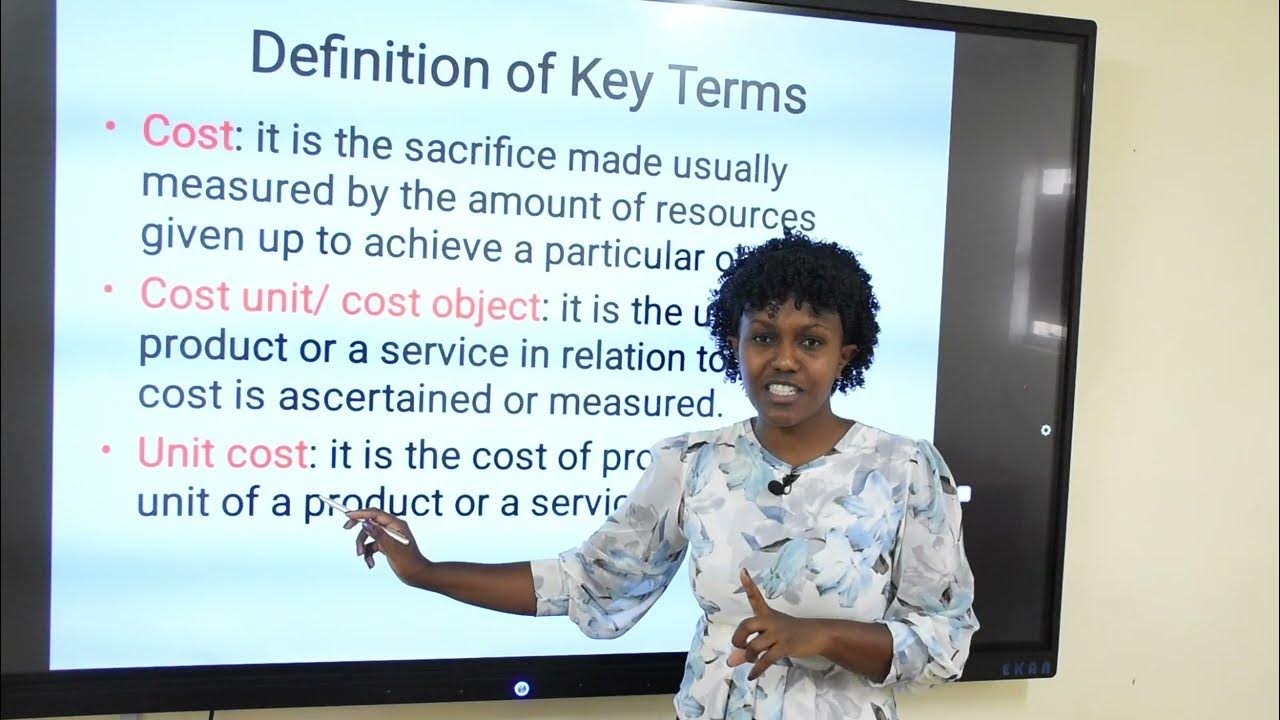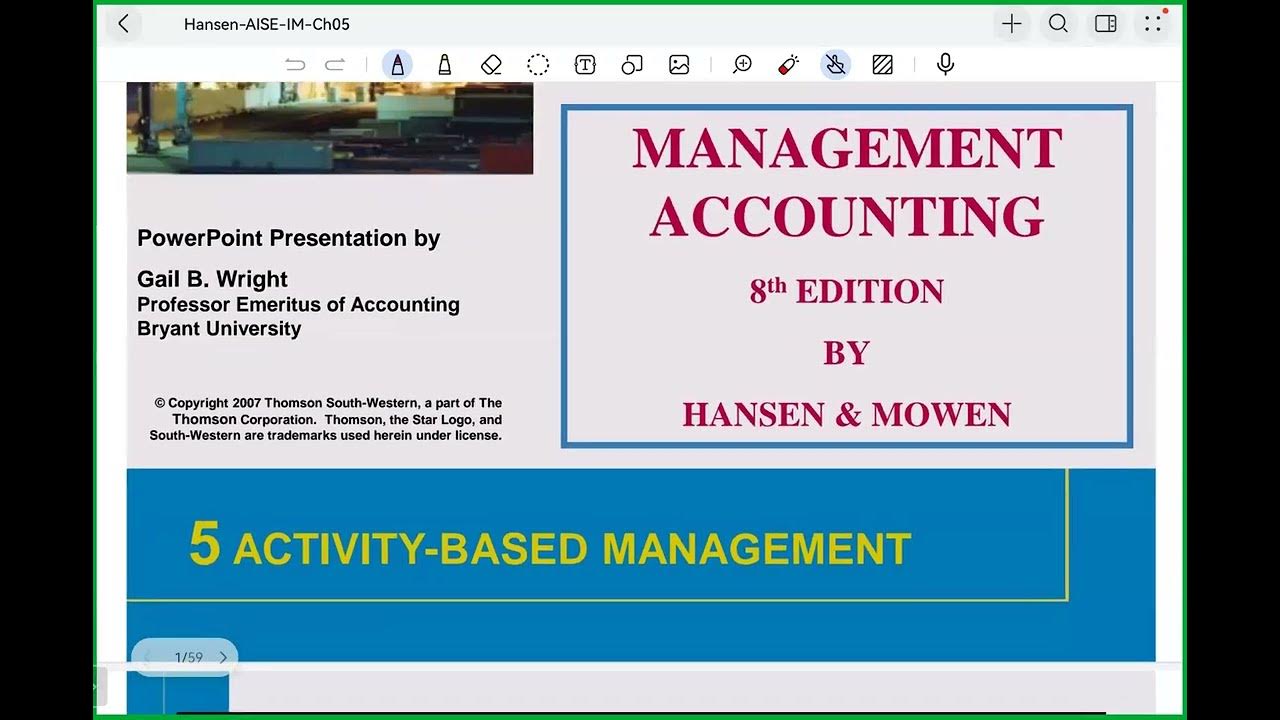Akuntansi Manajemen Pertemuan 6 Perilaku Biaya Aktivitas
Summary
TLDRThis lecture on Management Accounting focuses on cost behavior and its relationship with activity levels. It explains three types of costs: fixed costs, which remain constant despite changes in activity; variable costs, which fluctuate in proportion to activity; and mixed costs, which include both fixed and variable components. The lecture also introduces methods for analyzing mixed costs, such as the high-low method, least squares method, and interviews with managers. Practical applications, including determining the behavior of costs and managing expenses efficiently, are highlighted to enhance understanding of how costs impact business decisions.
Takeaways
- 😀 The topic of this lecture focuses on cost behavior and activity behavior in management accounting.
- 😀 Cost behavior refers to how costs respond to changes in the level of activity within a company.
- 😀 Activity is a broad term that includes any task or action performed by the company, such as the production or sale of products.
- 😀 Fixed costs (FC) remain constant regardless of changes in activity levels within a relevant range. Examples include managerial salaries, building insurance premiums, and depreciation.
- 😀 Fixed costs can be categorized into two types: committed fixed costs, which are long-term and cannot be reduced during a period, and discretionary fixed costs, which are short-term and can be reduced during a period.
- 😀 Variable costs (VC) change in total proportionally with changes in activity levels. Examples include direct material costs and direct labor costs.
- 😀 Variable costs can be further divided into engineered variable costs, which have a direct physical relationship with activity, and discretionary variable costs, which change based on management decisions like advertising or research costs.
- 😀 Mixed costs (semi-variable costs) include both fixed and variable components, and can be analyzed using methods like account analysis, interviews, or the high-low method.
- 😀 The high-low method involves calculating the variable cost per unit by comparing the highest and lowest levels of activity and their corresponding costs. The formula used is y = a + bX, where 'a' is fixed cost and 'b' is the variable cost per unit.
- 😀 The least squares method is used to estimate fixed and variable costs based on historical data, and it uses a formula to calculate the slope (b) and intercept (a). This method helps in understanding cost patterns more accurately.
- 😀 The lecture emphasizes the importance of understanding cost behaviors in making managerial decisions and the need for appropriate methods to analyze and allocate costs accurately.
Q & A
What is cost behavior in management accounting?
-Cost behavior refers to how costs change in response to changes in the level of business activity. These activities can include actions like the number of units produced or sold.
What are the three types of cost behavior discussed in the script?
-The three types of cost behavior are fixed costs, variable costs, and mixed (semi-variable) costs.
What is a fixed cost, and can you provide examples?
-A fixed cost is a cost that remains constant regardless of the level of activity within a relevant range. Examples include salaries of factory managers, insurance premiums, and depreciation.
What is the difference between committed fixed costs and discretionary fixed costs?
-Committed fixed costs are long-term, non-reducible costs, such as depreciation and top management salaries. Discretionary fixed costs, on the other hand, are short-term costs that can be reduced or adjusted, like advertising and research expenses.
What are variable costs, and what are some examples?
-Variable costs change in direct proportion to the level of activity. Examples include direct materials costs and direct labor costs.
What is the distinction between engineered variable costs and discretionary variable costs?
-Engineered variable costs have a direct and physical relationship with the level of activity, such as raw material usage. Discretionary variable costs, like advertising expenses, do not have a direct, physical link to the activity level but still fluctuate with it.
What is the account analysis method for analyzing mixed costs?
-The account analysis method is a simple technique where an accountant classifies certain costs as either fixed or variable by reviewing managerial policies and historical cost data.
How does the interview method help in analyzing costs?
-The interview method involves talking to managers to understand how specific costs will behave under certain actions. It helps determine whether costs will increase or decrease with certain managerial decisions.
Can you explain the high and low point method for analyzing costs?
-The high and low point method uses the formula y = a + bX, where 'y' is the total cost, 'a' is the fixed cost, 'b' is the variable cost per unit, and 'X' is the activity level. This method helps identify the cost behavior by comparing the highest and lowest activity levels with their corresponding costs.
What is the least squares method, and how is it used in cost analysis?
-The least squares method is a statistical technique used to estimate the fixed and variable components of mixed costs by minimizing the sum of the squares of the differences between observed and estimated values. It helps in creating a cost function based on historical data.
Outlines

This section is available to paid users only. Please upgrade to access this part.
Upgrade NowMindmap

This section is available to paid users only. Please upgrade to access this part.
Upgrade NowKeywords

This section is available to paid users only. Please upgrade to access this part.
Upgrade NowHighlights

This section is available to paid users only. Please upgrade to access this part.
Upgrade NowTranscripts

This section is available to paid users only. Please upgrade to access this part.
Upgrade NowBrowse More Related Video

Perilaku Biaya | Wahyu Pramesti, S.E., M.Si,. Ak., C.A

2023 Meet 3 Akuntasi Manajemen : Konsep dan Prilaku Biaya

Introduction to Cost and Management Accounting

Activity Based Management 1

2023 Meet 2 Akuntansi Manajemen : Konsep Dasar Akuntansi Manajemen

[MEET 2] AKUNTANSI MANAJEMEN - KONSEP & PERILAKU BIAYA
5.0 / 5 (0 votes)